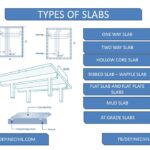A bridge abutment is a thick vertical end member of a bridge whose function is to take the load of bridge and distribute to soil. Its function is also to resist the horizontal loads which are acting on it due to earth pressure.
A bridge abutment plays very important part in duration and life span of bridge. It helps in connecting the deck or bridge surface to a ground. The weight of abutment helps in resisting both horizontal and vertical stresses.
For short bridges only one abutment is sufficient, while at either end then we connect the bridge to embankment, sometimes including a retaining wall.
For longer span bridge, there is more than one abutment that is placed along the span of bridge for necessary support at regular intervals.
It does not include retaining wall, so it only provides vertical support. The type of abutment is decided depending upon the features of bridge, available space and budget for the project.

Functions of bridge Abutment
- It transfers the bridge vertical load (dead load and vehicles load) along with wind and seismic load acting to the soil of high bearing capacity.
- It also transfers the load from superstructure to foundation components.
- By supporting one edge of approach slab abutment helps in safe landing.
- Abutment helps in providing stability between horizontal and vertical force components in arch bridges.
Also Read: Parts of a bridge: Everything You Need to Know about Bridges
Components of an Abutment
Wing wall
A wing wall is a vertical member which is provided only in abutment that is connected to embankment. Wing wall is like a retaining wall that resists earth pressure and prevents erosion.it also adds stability to a structure.
Also Read: Pier Foundation – Post & Pier – Types – Uses – Diagram – Cost [PDF]
Bridge seat
A bridge seat is a horizontal shelf at the top of abutment that supports the bridge deck. On the embankment, the end of span would be held by bridge seat while those placed along the span will reduce extended stress.
Backwall
A backwall is only included in embankment abutments and it is the back side of bridge seat and rise above seat to provide a horizontal brace from deck and reduce chances of soil erosion at joining point.
Abutment Pile
An abutment pile is a vertical wall which is connecting the bridge seat with ground. On an embankment a retaining wall is provided in vertical wall structure while cost effective columns are used in mid span abutments.
Footing
A Footing is a thick slab below the ground surface and it is a lower part of abutment whose function is to take the load of vertical portion of abutment and bridge and transfer it on soil of high bearing capacity.
The area of footing is sometimes wider than abutment depending upon the value of load and type of soil.
Types of Bridge Abutments
Gravity Abutment
A substantial foundation is provided for this type of abutment. Gravity abutment is very heavy and is most suitable for bearing earth pressure and water pressure. This type of structure rests directly on the ground. The gravitational pull is an element that helps in resisting heavier earth pressure and water pressure.
U shaped Gravity Abutment
U-shaped abutment has wings that are perpendicular to the face and act as counterforts. It is more durable and adaptable to the project requirements.
The bridge seat makes an angle of 90 degrees with the abutment wing wall. A U-shaped bridge abutment is made of two piles located across the width of bridges. It is made of reinforced cement concrete.
Stub Abutment
It is a short abutment that is made after completing the embankment. It is also called perched abutment. In this type of bridge abutment, the compaction of foundation soil is carried out by embankment load and then construction of abutment is started.
The pressure in this type of abutment is very less as compared to full height abutment because of its small height.
Also Read: Difference between Bridge and Culvert
Pedestal or spill through Abutment
It is a short stub type abutment supported on pedestals or columns that transfers the load on the ground. As like closed abutment, it is first constructed and then approach embankment is made.
Then in next process soil is placed on both the sides of pedestals to reduce the lateral movement of abutment and unbalanced earth pressure. It is very difficult to compact the soil properly around pedestals. There are chances of erosion until the end slope is not protected by paving or riprap etc.
Cantilever wall abutment
Cantilever abutment has two main applications. One is that it is used for retaining the back fill behind the wall and to prevent erosion. The second main purpose of this abutment is to support the load of structure. Some cantilever walls are also known as stub abutment. This type of abutment is made of very short height and is constructed at the top of horizontal roadway.
Full Height Abutment
Full height abutment is used in urban and congested areas where structural depth is one of the most important aspects. This abutment is of tall height and constructed for low level roads. It is constructed to support the entire structure.
Pile Bent Abutment
Pile bent Abutment is a type of abutment in which wall like support structure is replaced by series of piles or columns. A series of piles provide a support to the structure.
Design considerations for Bridge Abutment
- Make sure that there is no differential settlement of approach slab and bridge deck as it could cause a hazard and can also have significant impact on road’s aesthetics.
- The back fill such as soil, aggregate should be properly compacted beneath the approach slab.
- There should be no chance of shear failure in approach slab due to poor soil.
- The approach slab length must be appropriate for bridge deck width and abutment height as designed by certified structural engineer.
Bridge abutment construction
Bridge abutment wall is made by having concrete support wall on top of the pile cap supported by pile foundation or spread foundation retaining earth fill approach embankment. The construction of abutment over an existing Nullah, or water stream is different than the abutment for a ramp or road flyover.
Also Read: What is pile foundation? 9 Types of Pile Foundation (Must Know)
For an existing Nullah or river stream, we’ve got to deal with the embankment fill at the same time of construction. The soil is first excavated upto the bottom of the footing in case of spread footing. In case of pile foundation, the typical pile foundation construction procedure is adopted.
After foundation, we construct the vertical abutment wall that is the main retaining wall that takes the bridge vertical load as well as the horizontal earth fill pressure. Along with the abutment wall, we cast the wing walls together. It is a trapezoidal shape wall that just prevents the erosion of the embankment fill. After compacting the fill and embankment, we construct the approach slab on top of the approaching ramp. The bridge girders or beam rests directly on the beam seat.
Beam seat is monolithic with the abutment wall at the top. It provides footing for the girder and transfer the load to the abutment wall.
Also Read: Deep Foundation – Types – Uses – Advantages – PDF

















